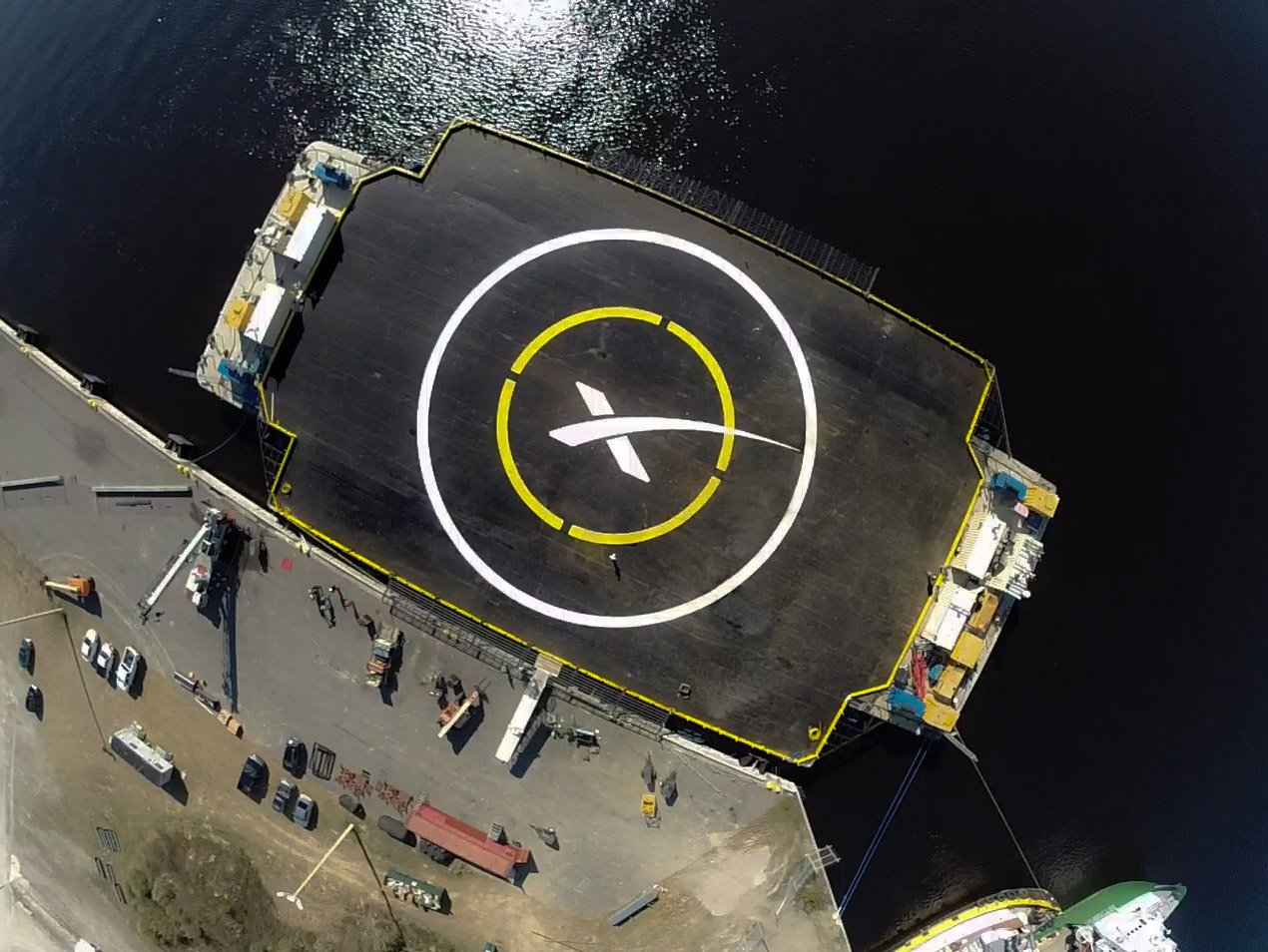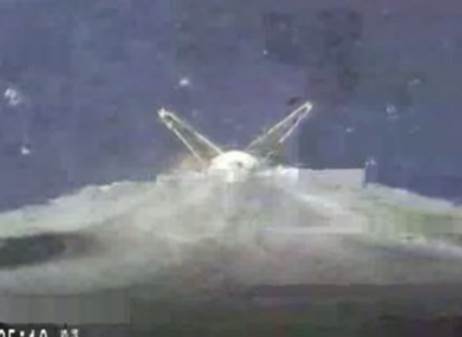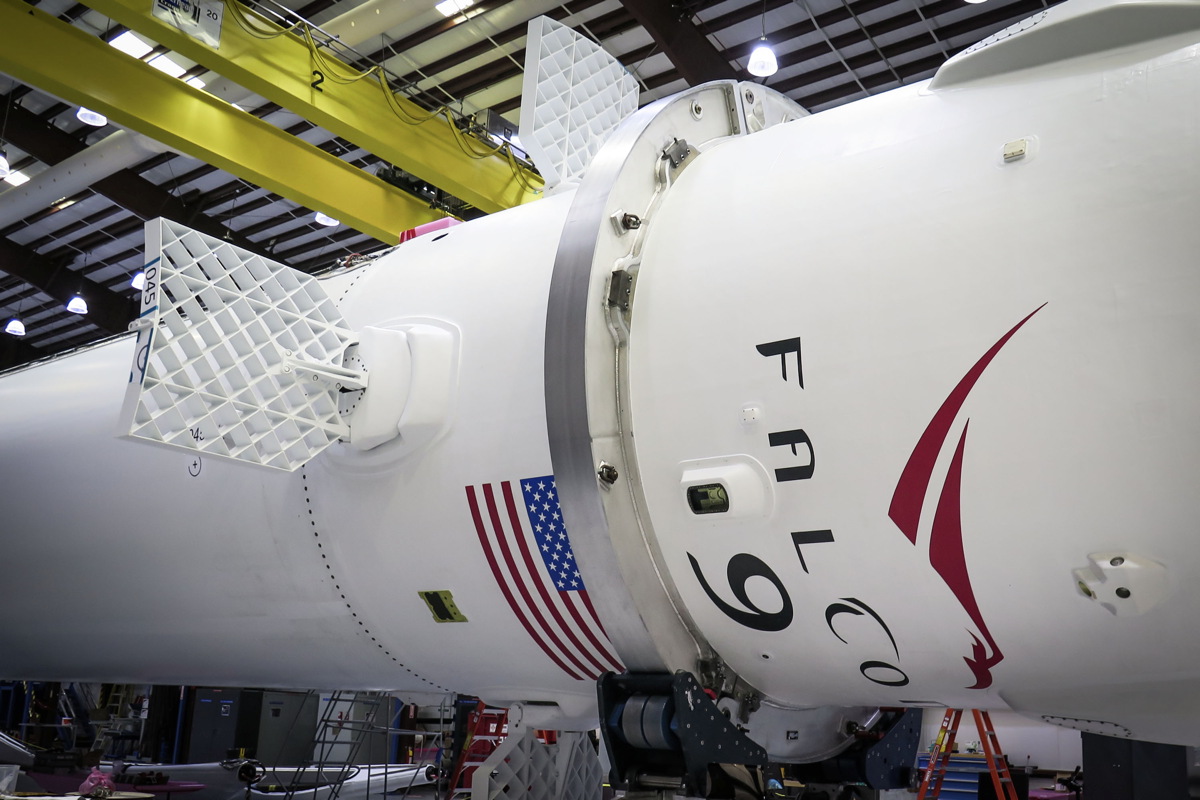SpaceX to Aim for Bulls-Eye Rocket Landing on Ocean Platform

It won't be easy, but the private spaceflight company SpaceX will attempt to bring a stage of its Falcon 9 rocket back from space and land it on a floating platform in the Atlantic Ocean during an audacious test on Jan. 6.
The reusable rocket test is expected to occur after the company's Falcon 9 rocket launches a robotic Dragon capsule on its way to the International Space Station for NASA next month. The launch was originally slated for Friday (Dec, 19), but SpaceX officials announced today that it will wait until the New Year to launch the misson to allow time for extra tests to ensure the rocket is ready to fly.
The test could mark a big step on the way toward creating reusable rockets in the future, according to SpaceX.
"A fully and rapidly reusable rocket — which has never been done before — is the pivotal breakthrough needed to substantially reduce the cost of space access," SpaceX representatives said in a statement. "While most rockets are designed to burn up on reentry, SpaceX is building rockets that not only withstand reentry, but also land safely on Earth to be refueled and fly again. Over the next year, SpaceX has at least a dozen launches planned with a number of additional testing opportunities. Given what we know today, we believe it is quite likely that with one of those flights we will not only be able to land a Falcon 9 first stage, but also refly." [6 Fun Facts About SpaceX]

SpaceX has successfully returned two Falcon 9 stages to Earth before, splashing down into the ocean, but this will be the first time the company has attempted a landing like this. And the private rocket company doesn't give this test a great chance of success. SpaceX is putting its odds of landing on the platform at about 50 percent, or less, according to the statement released Dec. 16.
Landing a rocket on an ocean platform — a custom craft called an autonomous spaceport drone ship — is not simple. While the pad is large at 300 by 100 feet (91 by 30 meters), with wings that extend its width to 170 feet (52 m), the Falcon 9's landing legs stretch the rocket stage to 70 feet (21 m), and the platform won't be anchored at sea. It's also difficult to bring objects back from space safely.
"Returning anything from space is a challenge, but returning a Falcon 9 first stage for a precision landing presents a number of additional hurdles," SpaceX representatives said. "At 14 stories tall and traveling upward of 1,300 m/s (nearly 1 mi/s), stabilizing the Falcon 9 first stage for reentry is like trying to balance a rubber broomstick on your hand in the middle of a wind storm."
Get the Space.com Newsletter
Breaking space news, the latest updates on rocket launches, skywatching events and more!
SpaceX engineers have added some stabilizing "grid fins" to assist in the landing as well. During earlier fly-backs, SpaceX had a landing accuracy of about 6.2 miles (10 km), but this test will require an accuracy of about 33 feet (10 meters) in order to be successful.

Friday's launch will mark SpaceX's fifth of 12 official robotic cargo missions to the International Space Station under a $1.6 billion contract with NASA.
Editor's note: This story was updated at 11 a.m. ET to reflect SpaceX's launch delay announcement released after this story's initial publication.
Follow Miriam Kramer @mirikramer. Follow us @Spacedotcom, Facebook and Google+. Original article on Space.com.
Join our Space Forums to keep talking space on the latest missions, night sky and more! And if you have a news tip, correction or comment, let us know at: community@space.com.

Miriam Kramer joined Space.com as a Staff Writer in December 2012. Since then, she has floated in weightlessness on a zero-gravity flight, felt the pull of 4-Gs in a trainer aircraft and watched rockets soar into space from Florida and Virginia. She also served as Space.com's lead space entertainment reporter, and enjoys all aspects of space news, astronomy and commercial spaceflight. Miriam has also presented space stories during live interviews with Fox News and other TV and radio outlets. She originally hails from Knoxville, Tennessee where she and her family would take trips to dark spots on the outskirts of town to watch meteor showers every year. She loves to travel and one day hopes to see the northern lights in person. Miriam is currently a space reporter with Axios, writing the Axios Space newsletter. You can follow Miriam on Twitter.









